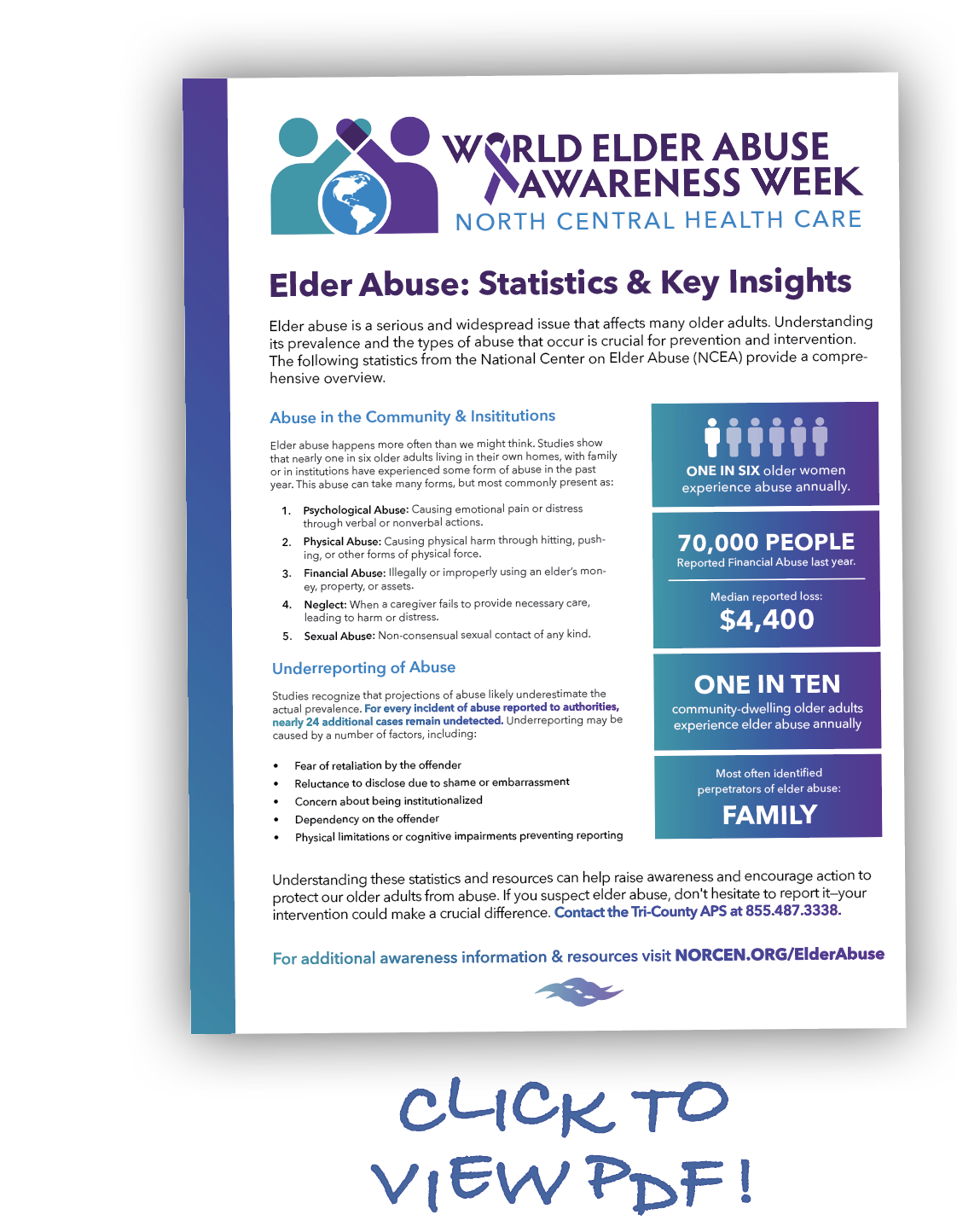Statistics & Key Insights
 Elder abuse is a serious and widespread issue that affects many older adults.
Understanding its prevalence and the types of abuse that occur is crucial
for prevention and intervention. The following statistics from the National
Center on Elder Abuse (NCEA) provide a comprehensive overview.
Elder abuse is a serious and widespread issue that affects many older adults.
Understanding its prevalence and the types of abuse that occur is crucial
for prevention and intervention. The following statistics from the National
Center on Elder Abuse (NCEA) provide a comprehensive overview.
Abuse in the Community & Insititutions
Elder abuse happens more often than we might think. Studies show that nearly one in six older adults living in their own homes, with family or in institutions have experienced some form of abuse in the past year. This abuse can take many forms, but most commonly present as:
- Psychological Abuse: Causing emotional pain or distress through verbal or nonverbal actions.
- Physical Abuse: Causing physical harm through hitting, pushing, or other forms of physical force.
- Financial Abuse: Illegally or improperly using an elder’s money, property, or assets.
- Neglect: When a caregiver fails to provide necessary care, leading to harm or distress.
- Sexual Abuse: Non-consensual sexual contact of any kind.
Underreporting of Abuse
Studies recognize that projections of abuse likely underestimate the actual prevalence. For every incident of abuse reported to authorities, nearly 24 additional cases remain undetected. Underreporting may be caused by a number of factors, including:
- Fear of retaliation by the offender
- Reluctance to disclose due to shame or embarrassment
- Concern about being institutionalized
- Dependency on the offender
- Physical limitations or cognitive impairments preventing reporting
Understanding these statistics and resources can help raise awareness and encourage action to protect our older adults from abuse. If you suspect elder abuse, don't hesitate to report it—your intervention could make a crucial difference.Contact the Tri-County APS at 715.841.5160.